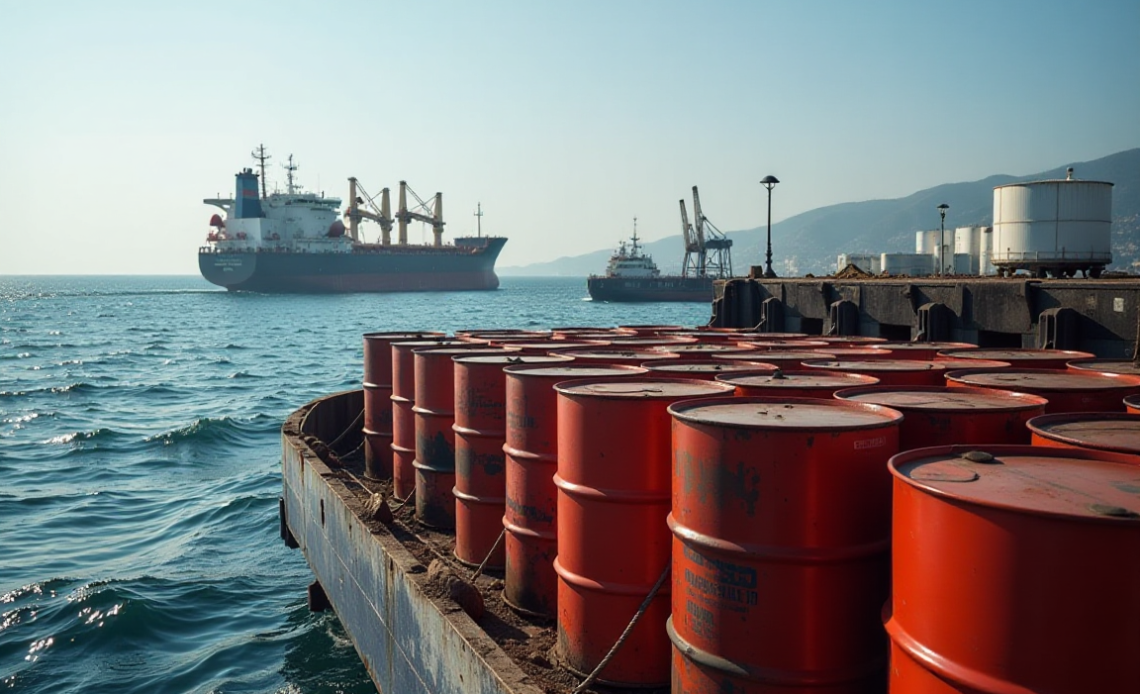
Indian refiners may find it difficult to replace Russian crude oil volumes completely, which is likely to drive up crude prices, according to Commerzbank AG.
US President Donald Trump of the US has issued a threat of unspecified punitive tariffs against India.
These tariffs would be in addition to the existing 25% general tariff rate and would be imposed due to India’s acquisition of Russian weaponry and energy.
Reportedly, the pressure is already impacting the situation, the German bank said in its latest update.
State-run refiners halt purchases of Russian oil
Media reports claimed that India’s four state-owned refineries halted purchases of Russian oil last week.
Instead, they are said to be buying oil on the spot market in the Middle East and West Africa.
According to Bloomberg, the Indian government is reportedly seeking information from state-owned refineries regarding contingency plans for oil supply in the event that Russian oil becomes unavailable.
However, the majority of India’s oil imports from Russia go to private refineries.
During the first six months of the year, Russian oil accounted for nearly 60% of deliveries to these refineries, averaging 1.8 million barrels daily, Commerzbank said.
Russia accounts for around 35% of India’s total oil imports, making it India’s most important oil supplier.
“It is unlikely that India will be able to completely abandon Russian oil in the short term, especially as other countries are also under pressure to look for alternative suppliers,” Carsten Fritsch, commodity analyst at Commerzbank AG said.
Limited options to support oil prices
“It is not possible to completely replace Russian oil supplies in any case, which is why effective sanctions would lead to significantly higher oil prices,” Fritsch added.
After the voluntary production cuts were reversed, OPEC+’s spare production capacity is likely to be approximately 4 million barrels per day.
Saudi Arabia is not expected to increase production beyond the agreed-upon levels.
“This would jeopardize the close cooperation with Russia that has developed over many years and thus also undermine the existence of OPEC+,” Fritsch said.
At the time of writing, the price of West Texas Intermediate crude oil on the New York Mercantile Exchange was at $68.88 a barrel, while Brent crude on the Intercontinental Exchange was around $71.41 a barrel.
Other options
Moreover, a significant increase in US production to fill the gap left by Russian supplies is an unrealistic expectation.
In May, US crude oil production hit a record 13.49 million barrels per day.
Nevertheless, the US Energy Information Administration’s most recent projections indicate that this figure is not expected to increase until late 2026.
Any subsequent rise would be gradual and contingent on price levels.
“Additional oil supplies could theoretically reach the market from Iran if a new nuclear agreement is reached and sanctions are subsequently lifted,” Fritsch added.
However, this is not particularly realistic at present.
The US even further expanded its sanctions this week, adding 115 more individuals, shipping companies, entities, and vessels in 17 countries to the sanctions list for involvement in circumventing previous Iran sanctions.
Sanctions imposed on Iran by the US Department of the Treasury are now at their most extensive point since 2018.
Diesel prices
The diesel price has not followed the recent price increase in the oil market.
The price held steady at approximately $700 per ton, according to the German bank.
Concurrently, the crack spread experienced a decline, moving from $26 per barrel at the start of last week to $21 per barrel.
This increase is likely attributed to a rise of 3.6 million barrels in US middle distillate stocks compared to the previous week.
This marks the third consecutive increase, an unusual deviation from the typical pattern.
Consequently, the situation has improved slightly: the considerable deficit against the five-year average has decreased from 25% to just over 15% within the past four weeks, according to Barbara Lambrecht, commodity analyst at Commerzbank.
In Europe, there’s no indication of relief. This week, ARA gas oil stocks dropped to their lowest point since early 2024, now standing at 14% below the long-term average for this period.
The post Limited options to replace Russian oil set to drive up crude prices appeared first on Invezz






